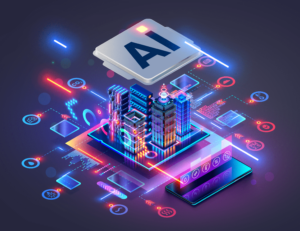
Does Artificial Intelligence have a role in CX?
Let’s talk about change. Not many people are comfortable with change. We have our routines, our regular customers, trusted suppliers and, yes, we have our competitors too but we know who they are, where they work from and we like it that way.
But the change that software and technology has brought over the past 15 years is something else entirely. However, when I sit back and realise that it’s the way of the world since time immemorial – I begin to get comfortable with that. Genies and bottles, toothpaste and tubes, there really is no going back now.
There’s no doubting the change is massive. Even for small businesses, globalisation and not localisation is the new norm and technology is having a faster and more dramatic impact on our society than the Industrial Revolution. Is it for better or for worse? – richer or poorer? It doesn’t matter – it’s a fact and that ‘bird’ has flown.
How do we manage all of this change and upheaval? There is talk of robots taking all our jobs and there’s drones in LA delivering everything from parcels to pizzas.
So, is there really a place for Artificial Intelligence in CX? And how should we use it?
Bring it on, we say. But be careful how you use it because it really does have its limitations. For the moment we are still the bosses and let’s not forget that.
‘Cybernetics’ is a word that should provide a part of the solution. It’s the study of people and machines. More formally it is “the scientific study of control and communication in the animal and the machine.”
Without getting too scientific about it, Cybernetics can be a way of using technology to help people do their jobs more easily and better. Take radiology for example, where Artificial Intelligence is used to analyse and detect cancer.
cells on MRI scans. This is not to say there is no Radiologist reading our x-rays but it does say that for such crucial work there is another ‘pair of eyes’ available. A good thing? – Yes!
In Customer Experience, we cannot devolve ourselves from emotion. Emotional drivers are the very foundation of the principles of CX and robots don’t have them! We need to use technology for the right things and at the right time, making it work for us so that we get better, faster and more personal.
Another great example would be how Artificial Intelligence can help us is to analyse dense data for anomalies, integrating multiple ‘voice of the customer’ sources such as survey data, call centre and social data which is key to better insights which in turn output useful predictive data. These are monotonous jobs that machines actually do much better. Once the alarm bell has gone off, we can intervene to diagnose the anomaly, then design a solution and implement that solution. No matter how advanced technology becomes, implementation and effective application is crucial. Companies need to be agile, accept the fact that they get things wrong sometimes and be able to change.
A slightly different example of technology is the use of chat-bots and voice command. These technologies have revolutionised how customers interact with companies, provide great personalisation and are very useful for factual, repetitive tasks and initial customer interactions. Companies like Intercom strike the perfect balance of fast automated solutions and having a human ‘feel’.
The interesting thing is we are comfortable interacting with chat-bots or automated voice systems provided we recognise they are automated. It’s okay to make automation ‘feel’ as human as possible but not a good idea to make the customer believe they are talking to a human when in fact they are talking to a robot. This will lead to distrust and frustration through the process.
Another key to the success of chat-bots and automated voice technology is knowing when to use them. And from a customer’s perspective, once required, a human can intervene.
Paying a bill online or getting a statement balance is fine for automated technology. But try explaining a disputed credit card charge on your statement to a robot and your experience will soon turn to frustration and anger. These situations require human discretion and good companies give authority to staff to resolve problems. There will always be a need for human intervention in the resolution of a customer issue.
Where companies see social skills and creativity as important assets there is always a need for human interaction. Automated checkouts in supermarkets may resolve Time & Effort issues but what negative effect do they have on the human touch factor of a cashier? I’ve regularly seen people queuing up for cashiers because they know them and receive a friendly comment or small, personalised conversation. These are highly valued interactions by people who may only have few other conversations during the day.
The key to using technology is to make it work for us and alongside us. Getting technology to do the mundane, repetitive tasks is what technology is great at. But if we want Customer Experience to work really well, human intervention and interaction is the key.
Maybe one day an automated checkout will ask me if I had a nice weekend but even if it does, it wouldn’t be pushed going back because of it!
